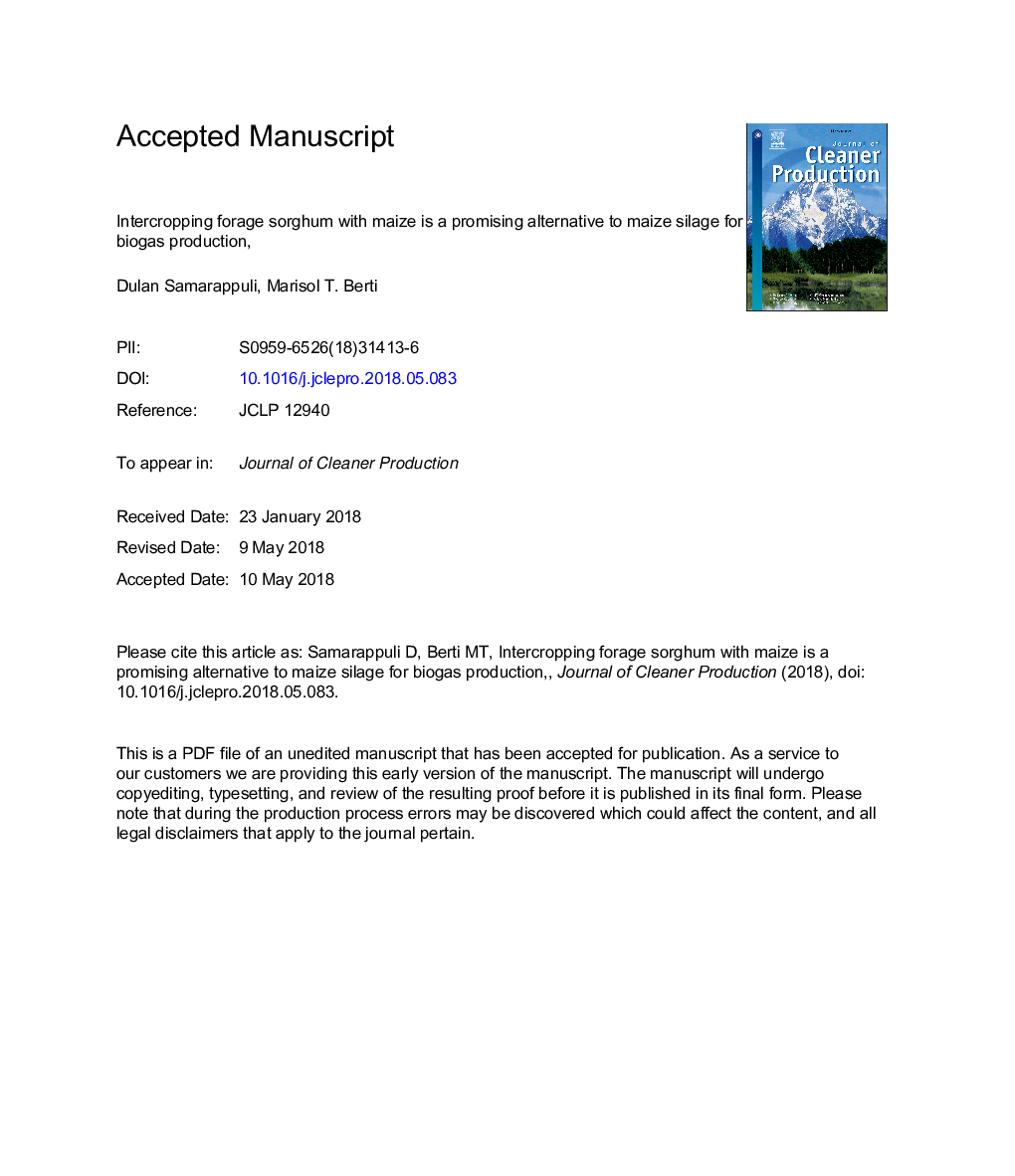| Article ID | Journal | Published Year | Pages | File Type |
|---|---|---|---|---|
| 8094323 | Journal of Cleaner Production | 2018 | 46 Pages |
Abstract
Maize (Zea mays L.) silage is the preferred feedstock choice for biogas production. However, other feedstocks or mixed feedstocks might have lower environmental impact than silage maize. The objectives of this study included: 1) to determine if forage sorghum [Sorghum bicolor (L.) Moench] and forage sorghum-maize intercropping can be a viable option to replace maize in forage and biogas production, and 2) to assess the environmental impact of systems involving maize and forage sorghum intercropping and comparing the impact of those, with conventional monocrop rotations. Replicated experiments were conducted in Carrington, Fargo, and Prosper, ND, in 2013 and in Fargo, ND in 2014. Maize for silage and grain and two forage sorghum cultivars (Brown Mid Rib (BMR) and non-BMR) were grown in monoculture and in intercropping. Treatments were a total of twelve; four monocultures, four inter-row intercropped maize-sorghum, and four within-row intercropped maize-sorghum. Results across environments indicated non-BMR forage sorghum monocultures produced similar or higher biomass yield compared with maize monocultures and maize-forage sorghum mixed cultures (inter-row and within-row). Biogas yield and forage quality produced by forage sorghum monocultures, and mixtures containing forage sorghum were similar to that of maize. Thus, forage sorghum can replace, at least in part, silage maize as feedstock for feed or biogas. Forage sorghum and forage sorghum-maize intercropping had lower environmental impact compared with maize in all categories evaluated. In conclusion, intercropping of forage sorghum with maize is a promising alternative to maize silage for forage or as feedstock for biogas production.
Related Topics
Physical Sciences and Engineering
Energy
Renewable Energy, Sustainability and the Environment
Authors
Dulan Samarappuli, Marisol T. Berti,
